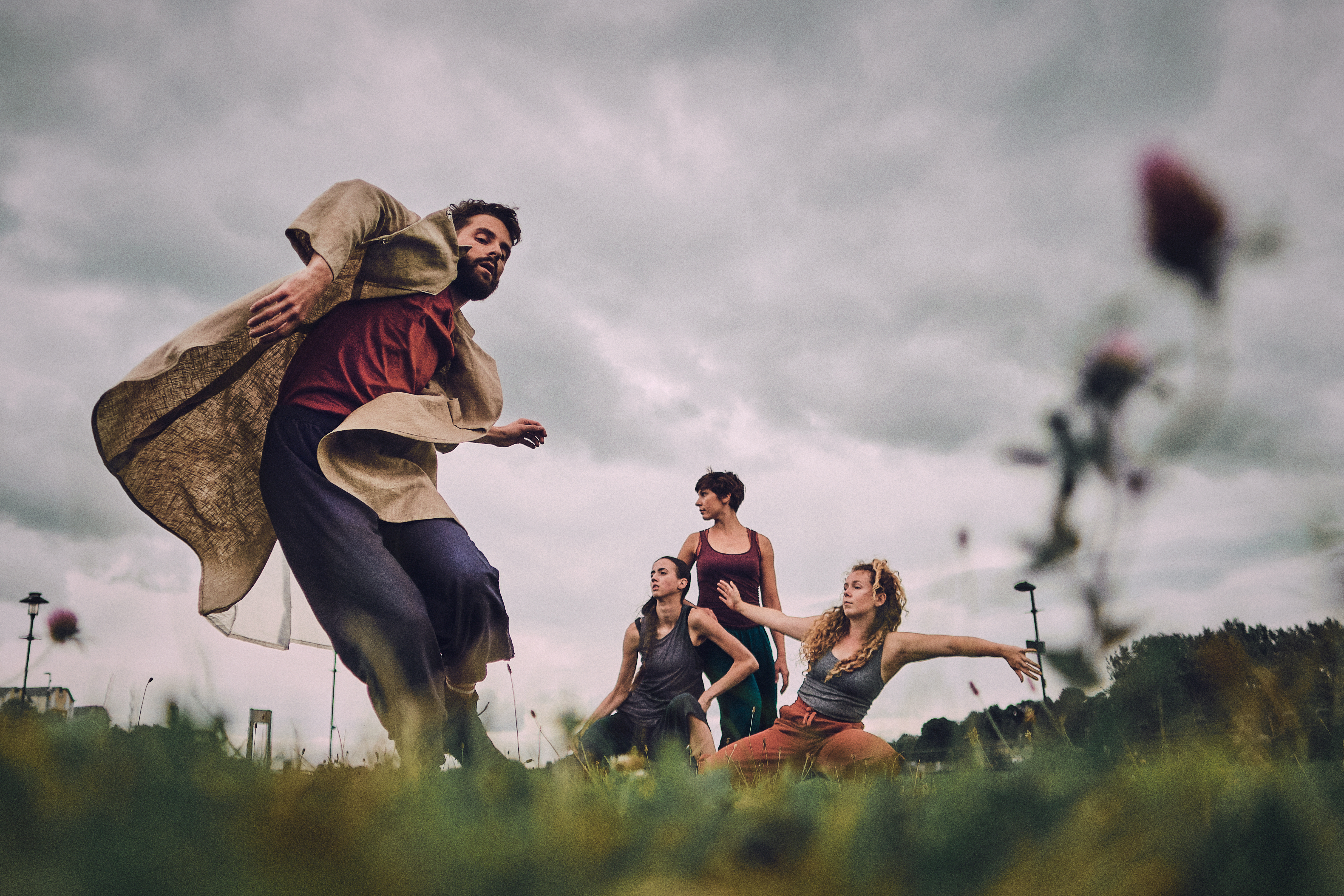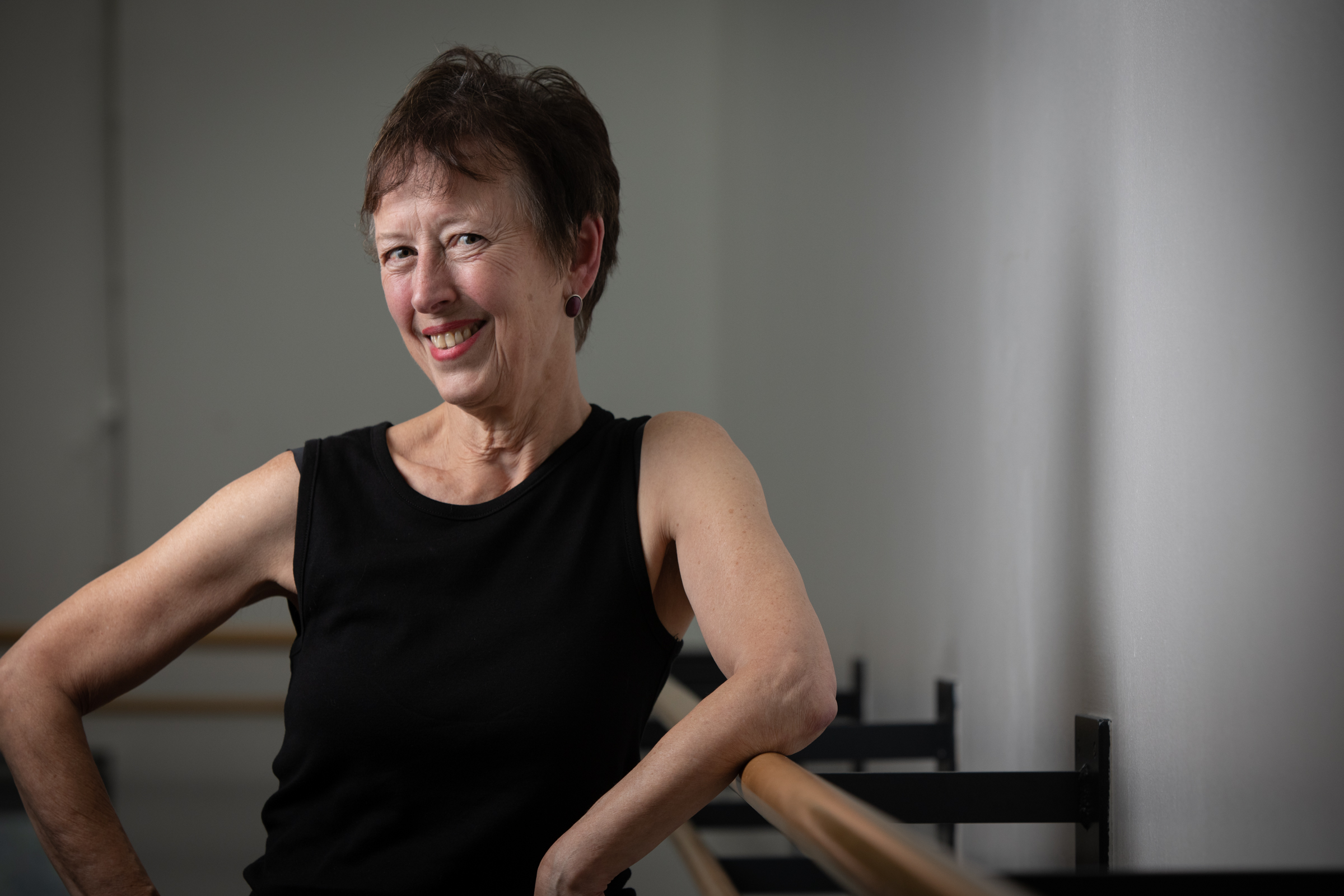Words by Katie Hagan.
I’m writing this article now, in the present. It’s 17 degrees, the sun is shining, and the world is in lockdown. My chat with independent choreographer Dora Frankel took place on a chilly night in February in between the days where parts of the UK were ravaged by storms. No doubt a by-product of climate change Dora and I concurred; a topic she is extremely passionate about and one which informs our subject of conversation, her work ‘Figures in a Floating Landscape’ which toured at the beginning of this year.
Fast-forward a couple of months and Venice’s long-murky waters are now so clear they are home to dolphins, and the world’s pollution levels have plummeted. Whilst we are in the midst of an economic and health crisis, nature is thriving, or so we are told. I guess the question going beyond this difficult period — which will pass in time — is whether this collective awareness of our own fragility and mortality will make us realise, yet again, that we can’t take things for granted.
“In our post-industrial society we’re seeing some of the worst aspects of environmental damage. There’s been huge climate change, even though people have tried to deny it even exists,” Dora says, exasperated. Her relationship with the environment has been a key part of her practice for many years. Although Dora’s Rambert training was cut short by a life-threatening illness, she didn’t let this faze her. She moved on to be a resident choreologist for American Ballet Theatre and the Royal Swedish Ballet, after first working at Rambert where she made a well-reviewed work Images for Two. She then taught in Newcastle, where she is still based, and founded the company Fertile Ground, the north-east’s repertory touring company.

Dora’s work has taken her to many places, Scandinavia, America and north-east England to name a few. With so many spaces imprinted on her life, it is no wonder the love for the outside world has developed in light of climate damage, and consequently fed into her dance work. “I wouldn’t be who I am without them,” Dora reveals, touched by memories.
So much so that when Dora and composter/collaborator Peter Coyte recognised a link between the work of British-treasure J.M.W. Turner, the deep connection to the environment and the coastal erosion on the east Kent coast, they decided to make the Turner dance trilogy: ‘The Unfolding Sky — Turner in the North’ (2013), ‘Figures in a Floating Landscape’ (2019) and ‘Turner in Venice’, hope to be completed by next year.
“As an artist, Turner became quite radical in his later years. I was thinking about the artwork and the creative powers of people who are further into their lives, as it were. I’m intrigued by what happens to our creative powers as we get older. It’s very powerful to think the older you get, the more radical you become!”
The current work, ‘Figures in a Floating Landscape’, makes a statement about climate change and mortality (Dora maintains three ‘prongs’ make a great base for dance pieces). It is a structurally and technically demanding piece of collaborative work, characterised by physicalised movement with sincere intent. Featuring a careful blend of dancers, Zara Sands, Becky Horne, Luca Braccia, and Livia Massarelli, ‘Figures in a Floating Landscape’ pushes its performers to their boundaries, requiring them to shift between different tones and dig deep into the layers of the piece.

Clearly invested in emotion and physical power, why is dance the best way to articulate the ideas within ‘Figures in a Floating Landscape’?
“Whilst some dance can be a little too obscure, at its best dance doesn’t tell you what to think. It opens doors and doesn’t tell you too much,” Dora elucidates. “It gets your heart racing. It lifts things up off the page and physicalises ideas.”
“I’m rooted in this holistic, artistic, kinaesthetic dance experience, and to me dance is unbelievably powerful,” Dora continues. “Peter, myself and the dancers have had free creative rein on this piece. It’s been liberative.”
“Throughout the tour of ‘Figures in a Floating Landscape’, non-dancers were struck by the work’s emotiveness, which is incredibly lovely to hear. The movement working with Peter’s symphony; bird sounds, ships, sounds of things knocking, sea lapping, is so rousing. If we as perfomers push ourselves communicatively and be within the movement, then it can be incredibly immense. You don’t need words.”
When I broach the subject of improving dance’s reach, Dora takes a moment to contemplate. “When I think about a performance, I’m more invested in the piece as an event rather than who is watching it. So even if we were performing outdoors or in a shopping centre, I would be thinking about the communicative moment of theatre. I think if we think about the audience too much then we may not push ourselves.”
Dora certainly makes a fair point. Whilst it is important to be aware of your audience, if you make them a priority, creators may never feel bold enough to change rhythm and head to alternative, fertile ground. By conforming to audience expectation, we may not be able to make the level of powerful work which actually engages them.
As we near the end of our conversation, we speak more about Dora’s rich career, particularly her teaching and site-responsive work in the north-east, which is really soul-opening, she says. “When I started making my own work, I was collaborating with so many artists from different disciplines, and that enabled me to test the pedagogic ideas I had accumulated over many years. Only now have I realised that I knew what I was doing,” Dora exclaims, not quite believing it herself. “I was even onstage last year at 67. My performance days aren’t quite over — I’ve still got one or two left in me.”
Header Image: Bec Hughes.
The ‘Figures in a Floating Landscape’ tour was unfortunately cut short due to COVID-19, however the team did enjoy successful runs at The Gulbenkian, Capstone Theatre, and Sunderland College, which were met with rave reviews.
